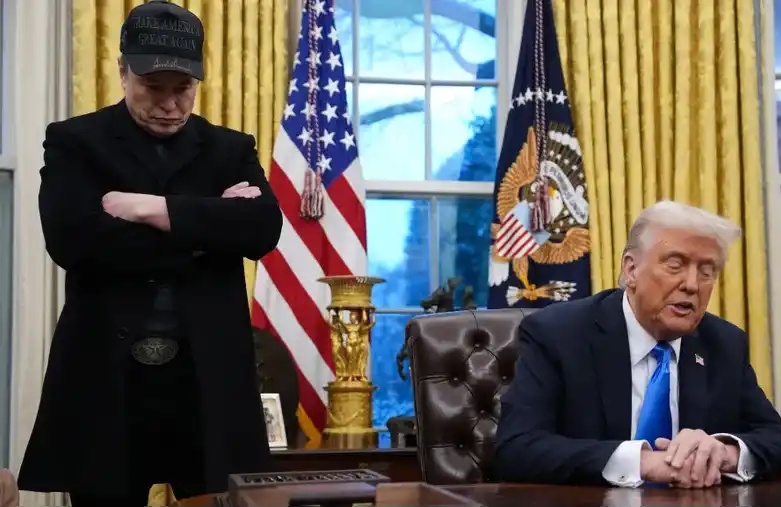a16z Partner: How Stablecoins Can Cut Off the Cross-Border Payment ‘Middleman Tax’
Original Title: Stablecoins: Payments Without Intermediaries
Original Author: Chris Dixon, a16z Partner
Original Translation: Felix, PANews
The internet has made information free and global. So why is transferring funds still so difficult and costly?
Early internet promised a future where anyone could publish, build, or transact without permission. Protocols like email and the World Wide Web were open and neutral, enabling a surge of creativity, innovation, and entrepreneurship. But along the way, it veered off course.
Today, the global financial system resembles a patchwork quilt stitched together by corporate networks: centralized, closed, and extractive. Behind every transaction lies a Rube Goldberg-like contraption of intermediaries such as POS, payment processors, acquiring banks, issuing banks, correspondent banks, FX platforms, credit card networks, and more. Each entity skims a commission, adding delays and imposing rules. These networks levy unnecessary tolls on commercial activity and stifle innovation. They turn what should be neutral channels into high-friction bottlenecks.
Stablecoins, cryptocurrencies pegged to stable assets like the US dollar, offer a way out, a reset—a way to bring the internet's original vision into the realm of money.
The Disruptive Opportunity of Stablecoins
The current payment system was not built for the internet but for a world filled with fee-collecting intermediaries who once played roles in managing local partnerships, fraud prevention, and operations. Even today, international remittance fees can be as high as 10% (In September 2024, the average fee for a $200 remittance was 6.62%). These are not just frictions—they are, in fact, regressive taxes on some of the world's poorest workers. Today's inherited system is slow, opaque, and exclusive, leaving billions underserved or entirely cut off from the global financial system.
For many businesses, traditional payment methods are highly inefficient. Stablecoins can significantly remedy this situation. B2B payments from Mexico to Vietnam typically take 3 to 7 days for settlement, with transaction costs ranging from $14 to $150 per $1000 traded, passing through up to five intermediaries, each skimming a percentage of the transaction. Stablecoins can bypass traditional systems like the international SWIFT network and associated clearing and settlement processes, making such transactions nearly free and instantaneous.
This is not just talk—this is already happening. Currently, companies like SpaceX are using stablecoins to manage their corporate funds (including repatriating funds from countries with highly volatile local currencies such as Argentina and Nigeria). Companies like ScaleAI are using stablecoins to pay global employees faster and cheaper. Meanwhile, in the B2C (business-to-consumer) space, Stripe is the first major payment processor to offer cryptocurrency payments, charging a 1.5% fee, only half of traditional payment methods. This could significantly increase the profitability of some businesses: as a16z partner Sam Broner pointed out, for very low-margin businesses like grocery stores, a 1.5% margin increase could potentially double their net income. (And in a competitive, blockchain-based market, transaction fees are expected to decrease even further).
Unlike the traditional financial system that developed in "silos," stablecoins are inherently global. They operate on the blockchain: anyone can build an open, programmable network. There is no need to negotiate with dozens of cross-border banks, just plug into the network. People have already recognized these advantages. By 2024, stablecoin transactions will reach $15.6 trillion, equivalent to Visa's transaction volume. While this number mainly represents fund flows (not retail payments), the scale still indicates that we are on the brink of a financial infrastructure revolution that does not rely on patching up 20th-century systems.
Instead, entirely new things can be built, some truly internet-native—what Stripe calls a "room-temperature superconductor of financial services," where the achievement is not lossless energy transmission, but lossless value transfer.
The "WhatsApp" Moment in Currency
Stablecoins give us a real opportunity for the first time to make money open, instant, and borderless, much like the transformation email brought to communication.
Think back to the evolution of messaging. Before apps like WhatsApp emerged, sending a cross-border text message meant paying 30 cents per message. And if the message actually got delivered, that was considered lucky. Then came internet-native messaging apps: instant, global, and free. Today's payment methods are like messaging in 2008: divided by borders, burdened by intermediaries, and controlled by "gatekeepers."
Stablecoins offer a brand-new alternative. They are not about cobbling together clunky, expensive, and outdated systems but rather about seamless flow on a global blockchain. These systems are programmable, composable, and designed for cross-border scalability.
Stablecoins have significantly reduced remittance costs: using traditional methods, sending $200 from the United States to Colombia would incur a $12.13 fee; using a stablecoin, the fee is only $0.01. (The fee for exchanging stablecoins to local currency is between 0-5%, and due to increased competition, prices continue to decrease).
Just as WhatsApp disrupted expensive international calls, blockchain payments and stablecoins are changing global remittances.
Regulation: From Bottleneck to Breakthrough
People often see regulation as an obstacle, but wise legislation is the key to solving the problem.
Establishing clear rules for stablecoins and the crypto market may ultimately allow these technologies to move out of the sandbox and towards wider adoption. For years, DeFi has been trapped in a closed, circular, "coin-to-coin" economy. Not because these tools are not useful, but because regulators have made it difficult for them to enter the traditional financial system.
This situation is now changing. Policymakers are actively creating rules to recognize and regulate stablecoins, to maintain U.S. competitiveness, protect consumer rights, and promote vibrant innovation. Thoughtful regulation—such as frameworks that differentiate between network tokens and security tokens—can deter bad actors while providing clear guidance for the compliant. In fact, an upcoming bill to clarify these regulatory rules may pave the way for broader adoption and integration into the global financial system.
Building Public Goods for Everyone's Benefit
Traditional finance is built on private closed networks. But the internet has shown the power of open protocols (like TCP/IP and email) that drive global collaboration and innovation.
Blockchain is the internet's native financial layer. They combine the composability of public protocols with the economic power of private enterprises. They offer trusted neutrality, auditability, and programmability. Adding stablecoins to them unlocks something never truly had: an open monetary infrastructure.
Think of it as a public interstate highway system. Private companies can still build vehicles, conduct business, and set up roadside attractions. But the road itself is neutral and open to everyone.
The role of blockchain networks and stablecoins goes far beyond cost reduction. They are catalyzing a new category of software:
· Programmatic Payments Between Machines: AI-driven agents automatically match transactions for computer resources and other services.
· Microtransactions for Media, Music, and AI Contributions: Just set simple budget rules and let "smart" wallets handle the payments.
· Transparent Payments with Full Audit Trails: Use these systems to track government spending.
· Global Trade Without Tedious Intermediaries: Enable low-cost instant settlement of international transactions — a reality today.
The era of blockchain networks and stablecoins has arrived: A confluence of technology, market demand, and political will is making these applications a reality. A stablecoin bill may pass this year, with regulators weighing a framework that matches risk with appropriate oversight. Just as early internet startups thrived once it became clear they wouldn't be shut down by telecoms or copyright lawyers, cryptocurrency is poised to leap across the chasm from financial experiment to critical infrastructure, with stablecoins leading the way.
No need to patch up old systems; we can instead build better systems from the ground up.
Welcome to join the official BlockBeats community:
Telegram Subscription Group: https://t.me/theblockbeats
Telegram Discussion Group: https://t.me/BlockBeats_App
Official Twitter Account: https://twitter.com/BlockBeatsAsia
 Forum
Forum OPRR
OPRR Finance
Finance
 Specials
Specials
 On-chain Eco
On-chain Eco
 Entry
Entry
 Podcasts
Podcasts
 Data
Data


 Summarized by AI
Summarized by AI







